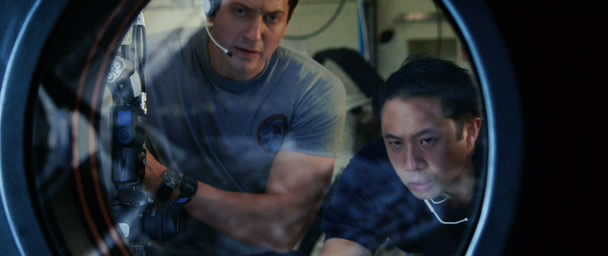找到一篇說明,提供參考!
The next time you see a picture or broadcast of astronauts in space, take a look at their wrists. Chances are good that you'll see not one, but two, or even three watches on their wrists. Astronauts have a lot to keep track of in space, and time is something they manage carefully…yet the specifics are left up to individual preference.
Astronauts have a choice of four watches that are certified to fly in space, says Stephanie Walker, subsystem manager for flight crew equipment at Johnson Space Center. These watches are off-the-shelf models that can be purchased at retail stores. "The certification process assures that they can perform and not self-destruct in the vacuum of space. With pressure variances and temperature extremes, watch components may expand, rupture, or crack, causing a potential hazard to the crew." Many materials that are safe on Earth produce off gassing in space—they emit gases that can contaminate the space atmosphere, and strain the air recycling and purification systems.
"The old standby watch is the Omega® Speed Master watch," says Walker. Omega was made famous by Apollo astronauts as they conducted space walks, but was first used in space by Walter Schirra when he orbited the Earth six times in the Sigma 7 spacecraft in 1962. "It's a constant favorite even though it has a standard face with hands instead of a digital readout. It's basic and simple, and many pilots and commanders prefer it because they can time their maneuvers accurately with it."
The Omega® X33 Chronograph is a more sophisticated watch, with analog and digital displays, and several timers that can be helpful during the course of experiments or other closely monitored activities.
The Casio® G-Shock® is another basic watch, Walker says, but it features a digital face and several timers—helpful when working on precise projects.
The new watch for astronauts is the Timex® Ironman®. This cutting-edge timepiece, which sells for less than $100, boasts a light-emitting diode (LED) port to synchronize up to 10 alarms to the calendar of a personal computer, stores 38 telephone numbers, identifies messages, displays the time in two different time zones, and comes close to serving as a wrist computer, Walker says.
An astronaut can even request to wear a personal watch from home. It will be logged in as crew member personal property, but can't be worn under extreme conditions like space walks or launches. "Personal watches can't be worn in the launch suit," Walker says, "because the suit is designed to automatically pressurize in the event of an emergency. That pressurization may cause the watch to rupture, and in an emergency, nobody would have time to take the watch off."
What's the purpose in wearing several watches? It all depends on the astronaut's priorities, says Walker. Mission Control schedules crew time and tasks on orbit, so it's not mandatory to wear a watch. But some experiments require precise timing, and since time on the Shuttle is on Central Time, time on the ISS is measured in Greenwich Mean Time, and the folks back home are on various local times, they often need several watches to keep track of it all.
There are other watch-like devices worn on astronauts' wrists, and they often reflect the work being done on a particular experiment or project. The Actilight watch, for example, measures light intensity and body movement, and evaluates circadian cycles and sleep quality.
Unless it's a personal watch brought from home, all NASA-issued watches are government property and must be turned in once astronauts return to Earth. Astronauts are permitted to check the watches out before launch, take them home to familiarize themselves with a watch's operation, and in the case of the Ironman, program data into the memory.
"Once you know what to look for, it's fun to notice how astronauts use their watches, like when they walk out to the launch pad, for instance," Walker says. "If you see an astronaut with a white band on the wrist area, that means he or she is wearing a watch. That wristband protects the launch suit from being scuffed by the watch. And, astronauts who do wear a watch on the outside of the launch suit need to use a band extender; otherwise, the watch would never fasten around that thick, bulky suit."
Courtesy of NASA's Space Operations Mission Directorate
Published by NASAexplores: May 1, 2002
| 發表人 | 內容 |
|---|---|
|
kevinc
分區版面管理員  |
|
|
jackyjau
中級會員  |
|
|
BarryHo
白金會員  |
|
|
les3466
終極會員  |
|
|
salmonpapa
中級會員  |
|
|
JOY1231
資深會員  |
|
|
MC5653
白金會員  |
|
第2頁(共2頁)
您 無法 在這個版面發表文章
您 無法 在這個版面回覆文章
您 無法 在這個版面編輯文章
您 無法 在這個版面刪除文章
您 無法 在這個版面進行投票
您 無法 在這個版面上傳附加圖檔
您 可以 在這個版面下載已上傳之附加圖檔
您 無法 在這個版面回覆文章
您 無法 在這個版面編輯文章
您 無法 在這個版面刪除文章
您 無法 在這個版面進行投票
您 無法 在這個版面上傳附加圖檔
您 可以 在這個版面下載已上傳之附加圖檔


